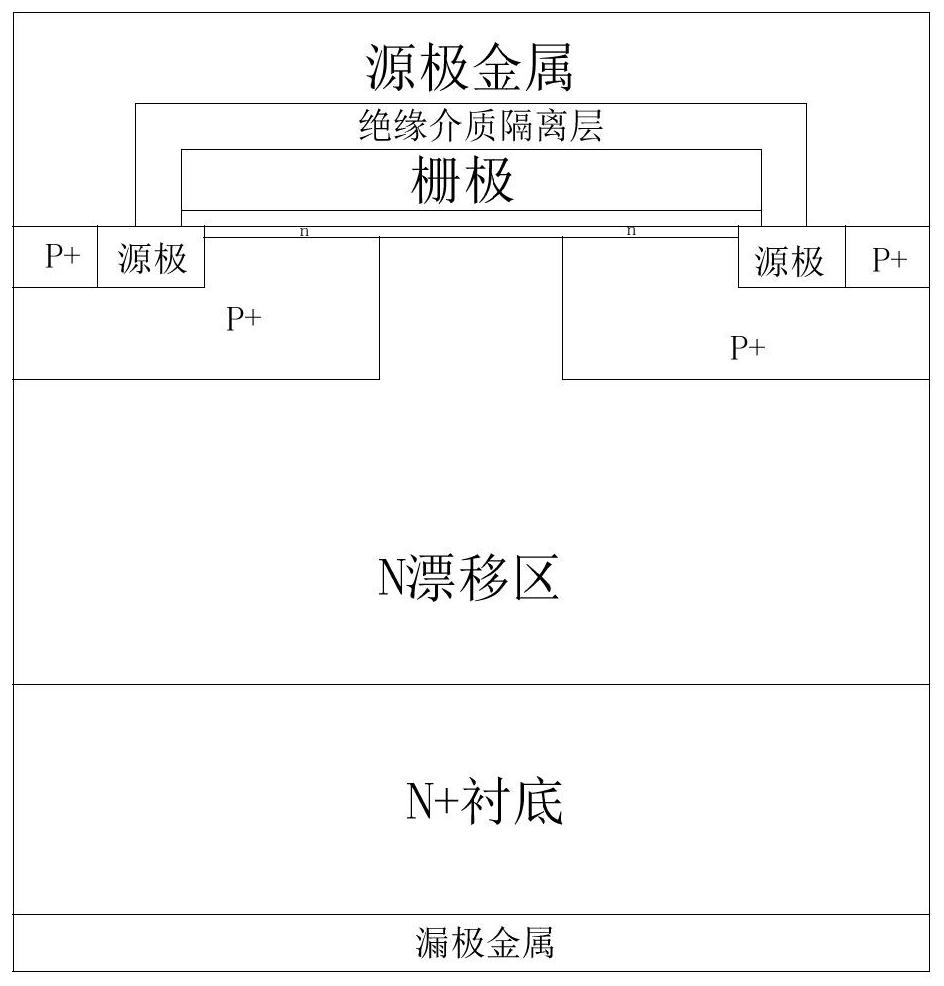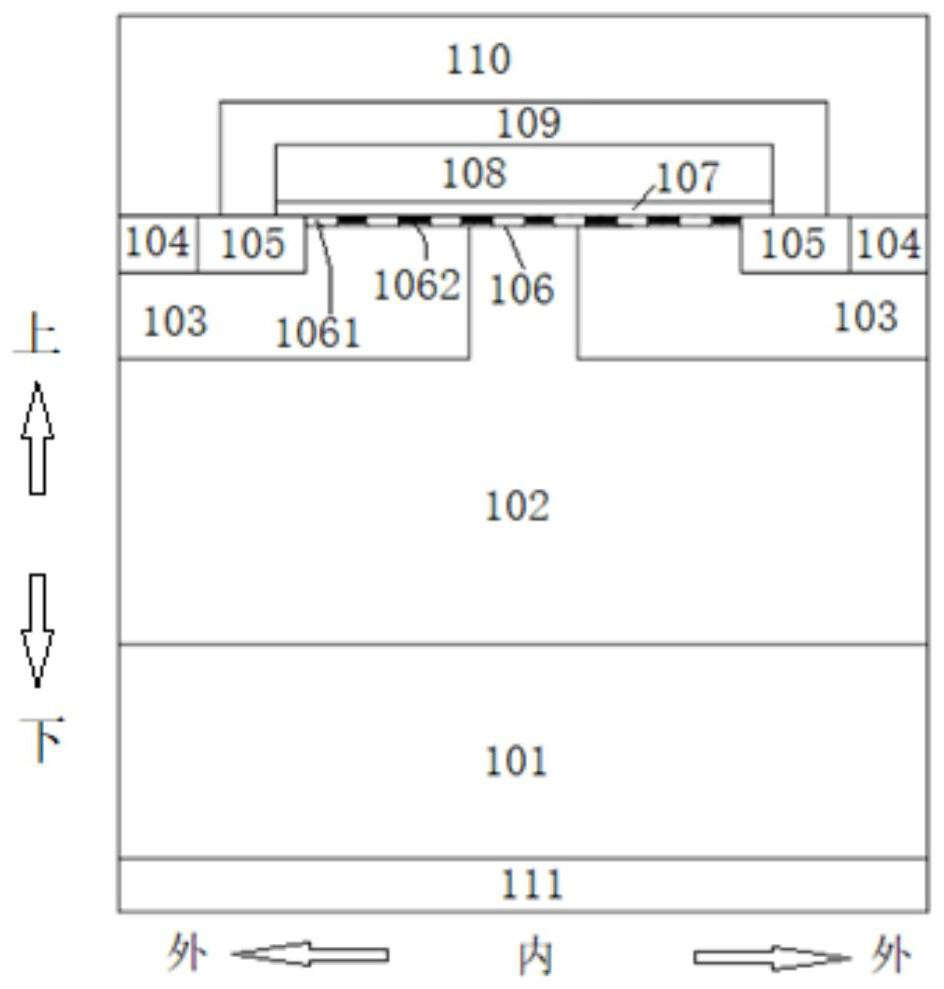Silicon carbide device, preparation method thereof and semiconductor device
A technology of silicon carbide and devices, which is applied in semiconductor devices, semiconductor/solid-state device manufacturing, electrical components, etc., and can solve problems such as demanding driving requirements, large leakage currents, and false openings
- Summary
- Abstract
- Description
- Claims
- Application Information
AI Technical Summary
Problems solved by technology
Method used
Image
Examples
Embodiment 1
[0043] 1. Epitaxially grow a layer of drift region on the substrate to form a wafer for making silicon carbide devices;
[0044] 2. Form a p-hydrazine region on the upper surface of the wafer by photolithography implantation
[0045] 3. A thin n-type epitaxial layer is epitaxially formed on the surface of the wafer;
[0046] 4. Impurities are implanted through the photomask to form n-type doped regions 805, and combined with the epitaxial layer formed in the previous step to form p-type doped regions and n-type doped regions alternately arranged and distributed, and the plane of the doped thin layer Structural schematic reference image 3 , and the maximum width of the p-type doped region and the n-type doped region is 0.5 microns;
[0047] 5. The source electrode and P+ contact area of the device are formed by photolithography implantation;
[0048] 6. Grown the gate oxide layer by wet oxidation, deposited polysilicon, formed the gate by photolithography and etching thro...
Embodiment 2
[0051] Same as Example 1, the difference is that the planar structure schematic diagram of the doped thin layer refers to Figure 4 .
Embodiment 3
[0053] Same as Example 1, the difference is that the planar structure schematic diagram of the doped thin layer refers to Image 6 .
PUM
| Property | Measurement | Unit |
|---|---|---|
| Maximum width | aaaaa | aaaaa |
Abstract
Description
Claims
Application Information
 Login to View More
Login to View More - R&D
- Intellectual Property
- Life Sciences
- Materials
- Tech Scout
- Unparalleled Data Quality
- Higher Quality Content
- 60% Fewer Hallucinations
Browse by: Latest US Patents, China's latest patents, Technical Efficacy Thesaurus, Application Domain, Technology Topic, Popular Technical Reports.
© 2025 PatSnap. All rights reserved.Legal|Privacy policy|Modern Slavery Act Transparency Statement|Sitemap|About US| Contact US: help@patsnap.com



